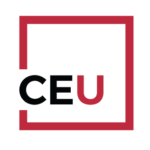Executive Summary
Consumers are accelerating past traditional brand innovation, turning TikTok hacks and viral trends into tangible product shifts in the real world.
A McKinsey study shows that 75% of Gen Z believe brands are “out of sync.” Simultaneously, the TikTok #dupe phenomenon has attracted over 6 billion views (Vogue Business). Brands that move fast and embrace consumer creativity—rather than only analyse it—are gaining market traction and heightened relevance.
In this post, we explore cases like e.l.f. Beauty’s billion-dollar pivot, L’Oréal Pakistan’s viral activation, and food industry hacks gone mainstream. We then outline what CPG leaders must do now; focusing on speed, cross-functional influence, and strategic visibility, to thrive in this new consumer-led innovation landscape.
If you prefer to listen rather than read:
A New Era: When Consumers Set the Innovation Agenda
Consumers today aren’t just buying products, they’re creating new ones! They’re building recipes, mash-ups, and hacks, then broadcasting them to millions. This isn’t a trend; it’s an innovation model.
Fueling Consumer Momentum
Seventy-five percent of Gen Z report that they rely on user-generated tips and tweaks to solve product frustrations (McKinsey). TikTok’s #dupe has over 6 billion views, with users replicating premium items at home, creating a grassroots movement that brands can’t ignore (Vogue Business).
Why This Matters for CPG
Brand innovation cycles typically take months, or even years. Consumer creativity operates in days. If your organisation isn’t tuned into this frequency, you risk falling behind, both in market relevance and career visibility.
So ask yourself:
What consumer hack is trending right now with your product?
How fast could you push a pilot response?
Who within your teams can align quickly on R&D, marketing, and supply chain?
Case Studies: Consumer-First Innovation in Action
e.l.f. Beauty: Mastering the Dupe Game
Instead of fighting dupe culture, e.l.f. Beauty embraced it by launching affordable alternatives to prestige products. Their strategy generated viral buzz, boosted consumer trust, and drove annual revenues past $1 billion (according to e.l.f. 2023 Annual Report).
Why it worked:
They treated consumers as partners, capturing feedback early.
They responded with speed, and products moved from insight to shelf in weeks, not months.
They celebrated co-created content, reinforcing community trust.
So ask yourself:
Could your brand turn a competitor’s product hack into an official version?
If speed is the difference between relevance and irrelevance, how quickly can your cross-functional teams decide and act?
L’Oréal Pakistan: Creator-First Launches
In Pakistan, L’Oréal distributed “TikTok Made Me Buy It” boxes to 200 influencers, resulting in 161 million impressions, 4.5 million clicks, and a record-breaking sell-out (TikTok Ads Case Study). Rather than engineering a complex launch, they leveraged social energy directly, aligning product, media, and packaging in real-time.
Why it succeeded:
Bypassed typical go-to-market delays.
Offered content that engaged both creators and consumers.
Cemented brand positioning with rapid action.
So ask yourself:
If your team could launch a limited-run product directly via influencers, would your systems allow it?
Who needs to be in the














